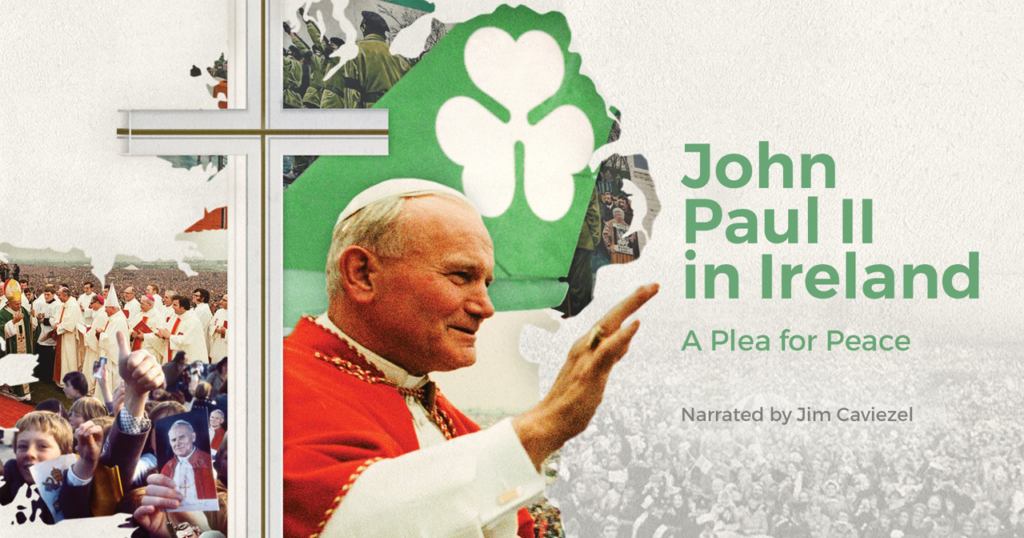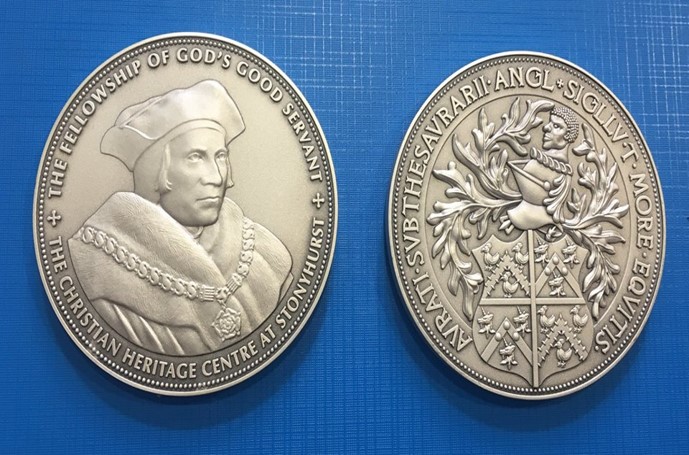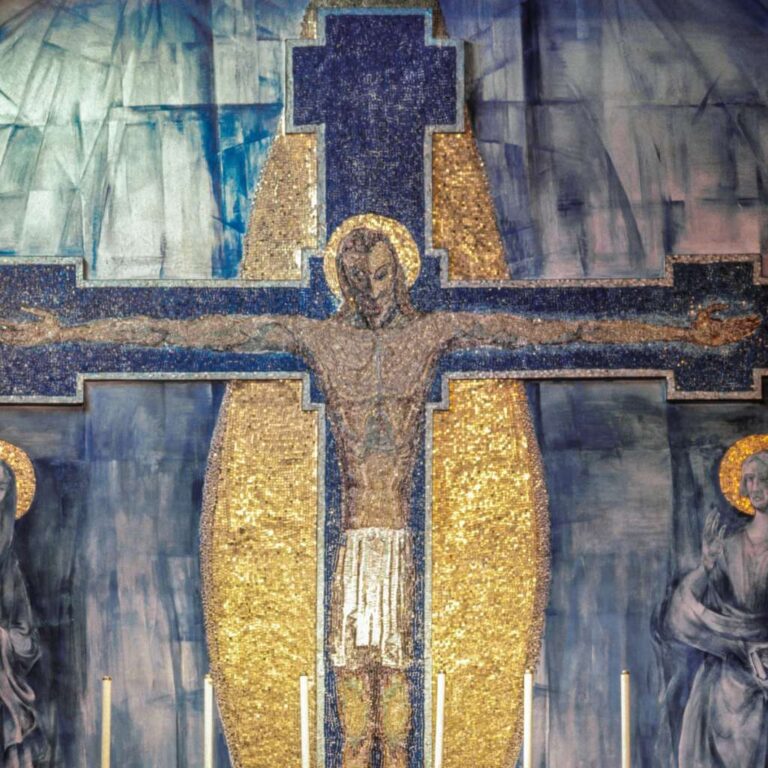Friday 5th October 2018
The CHC @ The Catholic Universe
Week of St Theodore celebrations includes a deeper calling for peace
The Trustees of the Christian Heritage Centre (CHC) at Stonyhurst have completed the restoration of Theodore House, but is continuing to raise funds for this previously derelict 19th century Lancashire corn mill’s internal fitting.
To mark progress, and the recent feast day of St Theodore – a seventh century Syrian refugee sent by Pope Vitalian to England to become the eighth Archbishop of Canterbury – the trustees organised several events. Two were directly linked to great saints of the 20th century, St Teresa of Calcutta and St John Paul – to whom the Oratory in Theodore House is dedicated.
At Westminster Cathedral Hall, in London, the CHC hosted the launch of a new movie about the 1979 visit of John Paul II to Ireland.
Essential viewing for anyone trying to understand why over 3,600 people lost their lives during the worst of the violence in Northern Ireland, it explores how, almost 40 years ago, St John Paul sowed the seeds of the Northern Ireland peace process during that historic visit.
Following in the footsteps of John Paul the movie criss-crosses Ireland but the defining moment is at Drogheda when he begged the men of violence to end the killing. “On my knees, I beg you to turn away from the paths of violence and to return to the ways of peace. You may claim to seek justice. I too believe in justice and seek justice. But violence only delays the day of justice. Violence destroys the work of justice.”
During the movie, the Protestant DUP MP, Jeffrey Donaldson, explains, that this was a watershed moment after which no one could claim that terror and violence is sanctioned by the Catholic Church.
John Paul reached over the heads of those preaching sectarianism and hatred clearly stating: “To Catholics, to Protestants, my message is peace and love. May no Irish Protestant think that the pope is an enemy, a danger or a threat… Let history record that at a difficult moment in the experience of the people of Ire- land, the Bishop of Rome set foot in your land, that he was with you and prayed with you for peace and reconciliation, for the victory of justice and love over hatred and violence.”
In another moving interview, the courageous former SDLP MP, Seamus Mallon, reminds us that IRA killings were responsible for more Catholic deaths than any other source. He also recalls how, years later, John Paul was able to repeat to him the exact words the Pope had spoken at Drogheda.
The movie includes other powerful interviews – one with a former IRA bomber who says that John Paul’s witness led him away from violence and another with Northern Ireland’s Baroness (Nuala) O’Loan.
Following the screening, the CHC and Knights of Columbus hosted a discussion with the Polish Ambassador, HE Arkady Rzegocki, and David Nagieri, one of the film’s directors. Further screenings will follow in Ireland and the DVD will be available in November.
Later in St Theodore’s week, the CHC held a well-attended open day at Theodore House. It began with the launch of a new exhibition on the life of St Teresa of Calcutta – staged in partnership with the advocacy organisation, Alliance Defending Freedom.
It includes some of St Teresa’s best known sayings: ‘I wanted to become a mother to the poorest of the world’s poor’; ‘The greatest destroyer of peace is abortion’; ‘works of love are works of peace’; ‘if you can’t feed one hundred people then feed just one’; ‘I alone cannot change the world, but I can cast a stone across the waters to create many ripples.’
During the Open Day, talks were given to visiting groups about the vision that underpins Theodore House and the CHC – and many who came from parishes and schools across three northern dioceses ex- pressed interest in using the facilities for retreats, conferences and events.
Theodore House also staged its first young people’s conference. Organised by one of the trustees, Deacon Sam Burke OP, it focused on the contribution which Catholics can make to public and political life and speakers included Francis Davis and Christopher Graffius. During the week, the trustees presented a new medal to the Keeper and Curator of Commemorative and Art Medals at the British Museum, Philip Attwood.
Commissioned by the trustees and struck by the Catholic jewellers the Fattorini family, the medal commemorates St Thomas More, the Patron saint of the CHC project. The medal is awarded, along with the God’s Good Servant Fellowship, to singular individuals who have contributed to the work and objectives of the charity.
The week concluded with trustees welcoming Nicholas Braithwaite to Theodore House. Nicholas is the great nephew of Georg Mayer-Marton, a Jewish mosaic artist whose entire family were killed in the Holocaust. Georg reached England, where, after the war, he undertook several important mosaics – one of which is in a decommissioned church in Oldham.
The trustees of the CHC have been entrusted with the mosaic by Bishop John Arnold – who hopes they can provide a new home and use it for educational purposes. Bishop Arnold says: “I would be delighted if it proves possible for this important piece of work, by this Jewish artist, whose family perished in the Holocaust, to stay within the Salford diocese. “I also believe that if it becomes the focal point of a learning hub that examines anti-Semitism, the Holocaust, and contemporary religious and ethnic persecution, it will assume a new and wider significance as we seek to combat new forms of hatred.” The idea has received support from the Holocaust Educational Trust.
Bishop John’s words, and the Trustees’ vision, is directly linked to the stories of both St John Paul and St Theodore. After refusing to renounce his faith, Theodore became a victim of religious hatred, while, as a young man, St John Paul witnessed the Holocaust. In 2000 he placed a prayer in Jerusalem’s Western Wall that read: “God of our fathers, you chose Abraham and his descendants to bring your name to the nations. We are deeply saddened by the behaviour of those who, in the course of history, have caused these children of yours to suffer.”
In these days of rising anti-Semitism and religious hatred, the trustees also pray that Theodore House can play a small part in opening hearts and forming minds. Anyone interested in supporting this endeavour should contact the charity.




